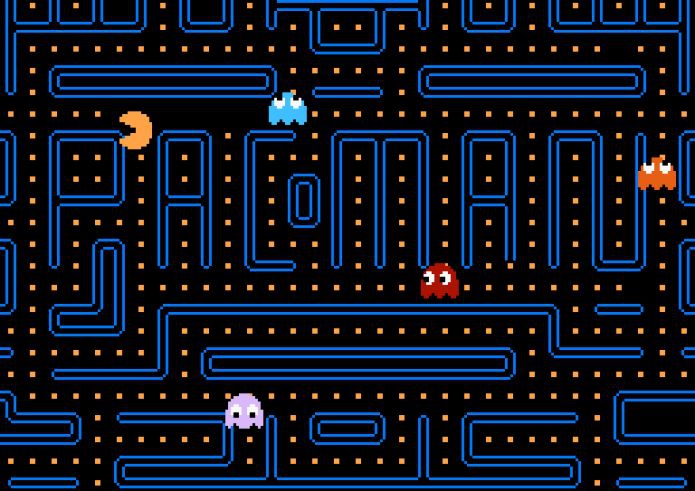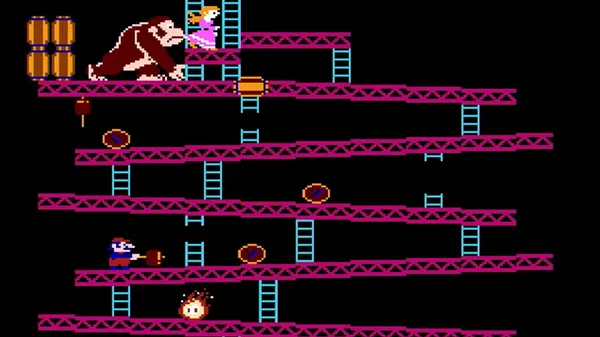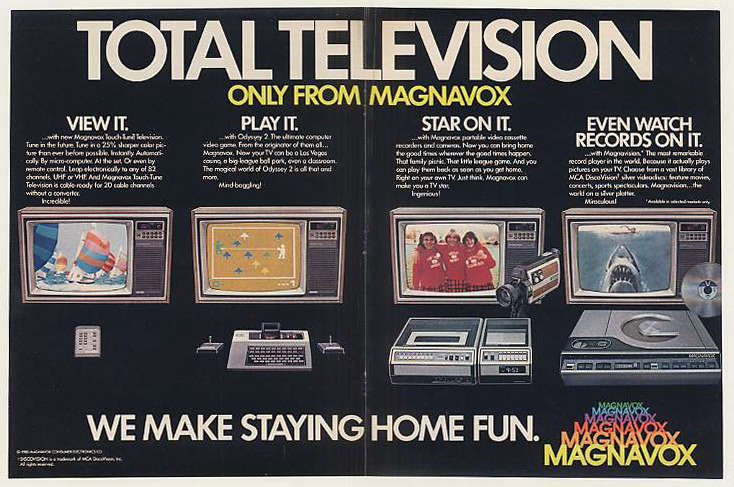The second generation of video game consoles, often referred to as the golden age of arcade games, spanned from 1976 to 1992. This period saw remarkable advancements in both home consoles and arcade machines, with the introduction of iconic systems such as the Atari 2600, Intellivision, and ColecoVision.
These consoles revolutionized the gaming industry by introducing interchangeable cartridges – which, above all, allowed players to expand their game libraries without purchasing entirely new systems.
During this era, video gaming became mainstream, evolving from a niche hobby into a global entertainment phenomenon. The second generation of video game consoles not only transformed living rooms but also made arcades a cultural hub for social interaction and entertainment.
This article is part of a complete series where we do a deep dive into each video game generation.
Historical retrospective of the second generation of video game consoles

The second generation of video game consoles laid the foundation for the gaming industry as we know it today. Its roots trace back to the late 1970s – when the industry saw the introduction of microprocessor-based systems. Before this, consoles were relatively primitive, featuring games hardwired into the system with no capability to add new titles.
The turning point was the launch of the Atari 2600 in 1977, which allowed players to insert cartridges to play a variety of games. This innovation, along with the growing popularity of arcade machines, marked the start of the video game boom that would last throughout the 1980s.
The second generation also played a pivotal role in creating some of the most recognizable titles in gaming history. Pac-Man, Donkey Kong, Space Invaders, and Asteroids not only dominated arcades but also entered pop culture in a way no other games had before.
Key consoles of the second generation of video game consoles
The second generation of video game consoles brought with it some of the most iconic and beloved gaming consoles of all time. These systems became synonymous with innovation and set the standard for home entertainment.

Atari 2600 (1977)
The most notable console of this era, the Atari 2600, is widely credited with popularizing home gaming. The system boasted interchangeable cartridges, allowing for an expanding library of games, many of which have become legendary. The Atari 2600 brought titles like Pitfall!, Adventure, and Space Invaders to living rooms around the world.
Intellivision (1980)
The Intellivision, produced by Mattel, introduced more sophisticated graphics and sound than its Atari competitor. With its unique controller design and a wide array of sports and strategy games, it carved out a loyal player base. Games like Utopia and Major League Baseball set the console apart as an early innovator.
ColecoVision (1982)
ColecoVision’s arcade-style graphics and controllers allowed it to deliver near-perfect arcade ports to home audiences. Titles like Donkey Kong and Smurf: Rescue in Gargamel’s Castle showed off its capabilities. Despite its success, ColecoVision’s life span was short due to the looming video game crash.
Odyssey² (1978)
Magnavox’s follow-up to the first-ever console, the Odyssey², featured a built-in keyboard and offered a unique blend of video games and educational titles. Though not as popular as its competitors, it still contributed to the diversity of the second generation.

Trends in the second generation of video game consoles
The second generation of video game consoles introduced a host of new trends and innovations that would shape the future of gaming. Here are some of the key developments:
Cartridge-based systems
The shift from built-in games to cartridge-based systems was one of the defining innovations of this generation. This not only extended the life of consoles but also paved the way for third-party game developers to enter the market. Atari’s relationship with third-party developers, such as Activision, laid the groundwork for a more open game development ecosystem.
Improved graphics and sound
While still simple by modern standards, the second generation of video game consoles significantly improved the visual and auditory experience for players. The use of microprocessors allowed for more detailed sprites, richer sound effects, and engaging gameplay mechanics. Arcade titles like Galaga and Defender pushed the boundaries of what video games could achieve in terms of immersion.
Introduction of high scores and competitive gaming
The concept of high scores was popularized in arcades, where players would strive to achieve the top score on machines. This competition became a core aspect of gaming culture and paved the way for future developments in multiplayer and e-sports gaming.
Notable games of the second generation of video game consoles
The second generation of video game consoles saw the rise of several iconic titles that defined the era and remain beloved to this day. Here are some of the most influential games from this generation:
Space Invaders (1978)
Originally an arcade game, Space Invaders made its way to the Atari 2600, where it became one of the most popular titles of the era. Its simple yet addictive gameplay and iconic enemies solidified it as a classic.
Pac-Man (1980)

Perhaps the most famous video game of all time, Pac-Man was an arcade sensation that became a cultural phenomenon. The game was later ported to various home consoles and remains a symbol of the golden age of video gaming.
Donkey Kong (1981)
Featuring the debut of Nintendo’s mascot, Mario, Donkey Kong was a massive success in arcades before being ported to consoles like the Atari 2600 and ColecoVision. The game’s challenging platforming mechanics and engaging story set it apart from other titles.

Pitfall! (1982)
One of the first platformers, Pitfall! was a groundbreaking game for the Atari 2600 that showed off the system’s potential for adventure games. Its complex level design and fast-paced action made it an instant hit.
The legacy of the second generation of video games
The second generation of video games left a lasting legacy on the industry. It established the home console market as a viable and profitable industry while popularizing arcade gaming as a social and cultural phenomenon. The innovations of this era, particularly in terms of hardware design, game development, and marketing, laid the groundwork for the future generations of video games.
While the industry would face a severe downturn in 1983 with the video game crash, the second generation of video games proved that video gaming was more than just a passing fad – it was a new form of entertainment that would continue to evolve and thrive.

Create your own retro-inspired game with Main Leaf!
As we reflect on this golden age of video gaming, it’s clear that the second generation of video games laid the foundation for everything that came after. Today, its influence can still be felt in the continued popularity of retro gaming and the ongoing development of classic game reboots and remakes.
Are you a fan of the simple yet charming graphics of arcade pixels? At Main Leaf, we understand the power of nostalgia and the growing trend of retro-inspired gaming. Whether it’s the low-poly aesthetics of Pac-Man or the 2D platforming excitement of Pitfall!, we can help you bring your vision to life.
If you’re passionate about creating a game that captures the essence of this era – complete with simple graphics, challenging gameplay, and arcade-style mechanics – why not partner with Main Leaf to develop your dream game? Let’s build a modern game that’s rooted in the classics! Reach out to us today and start creating the next Space Invaders for a new generation of gamers.

